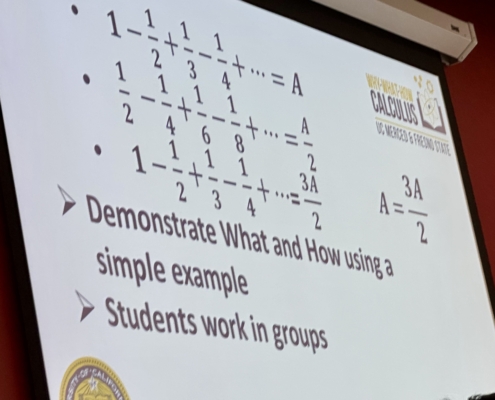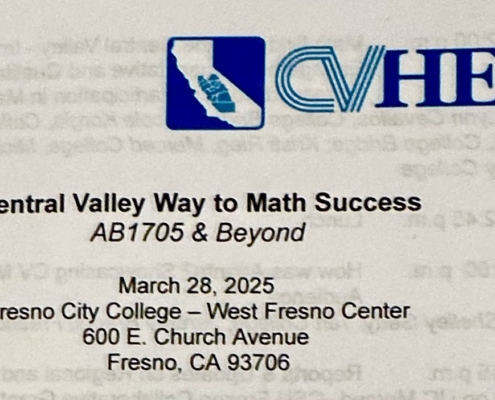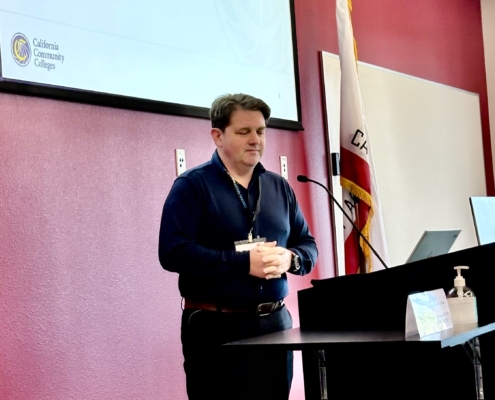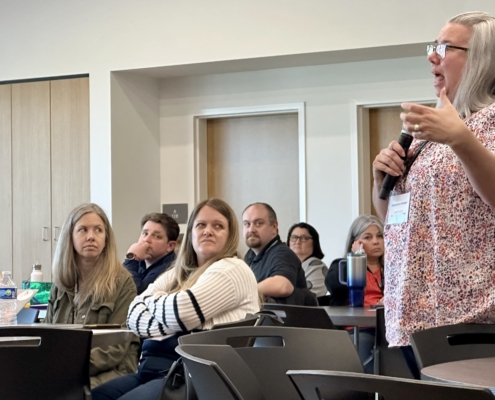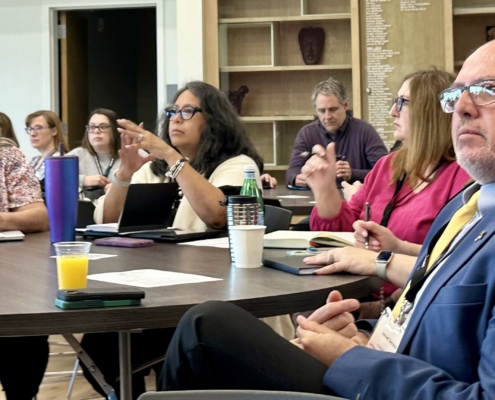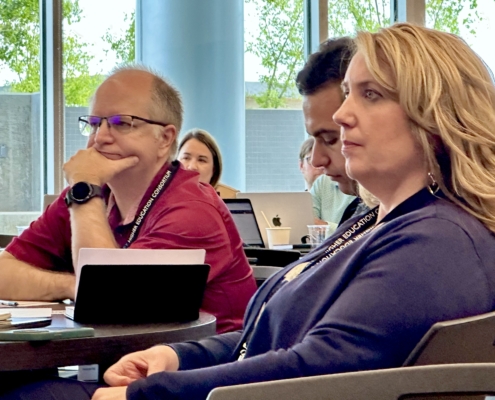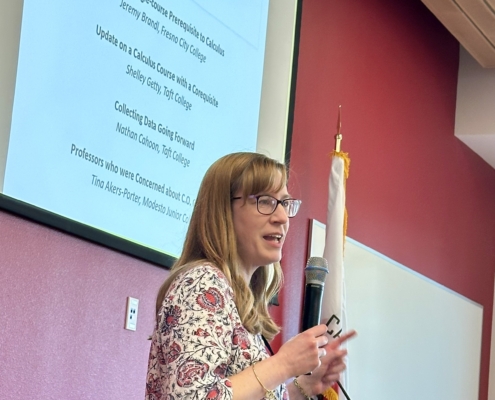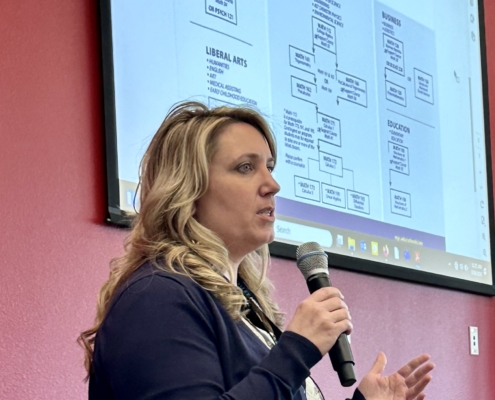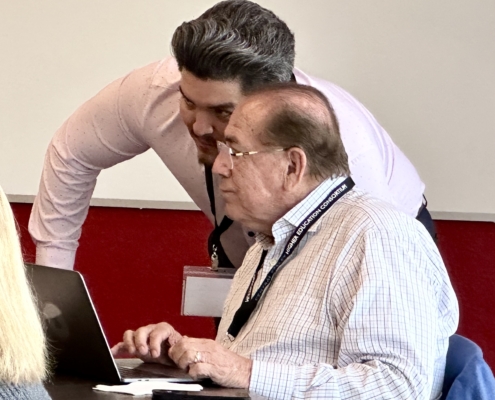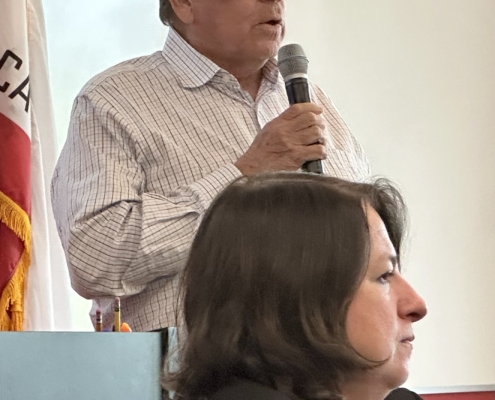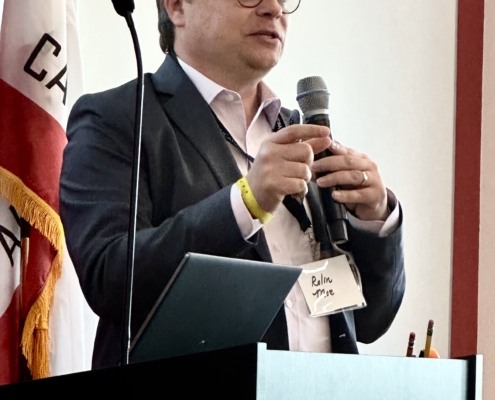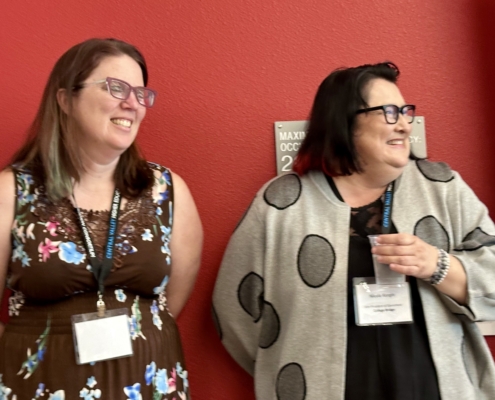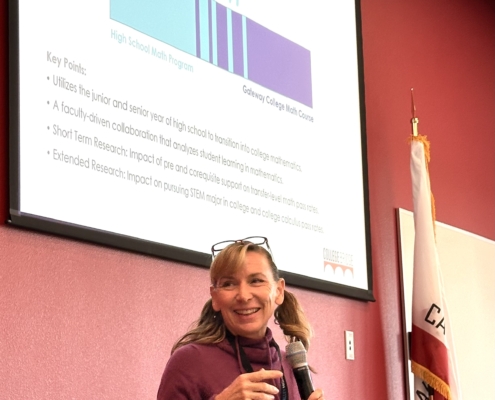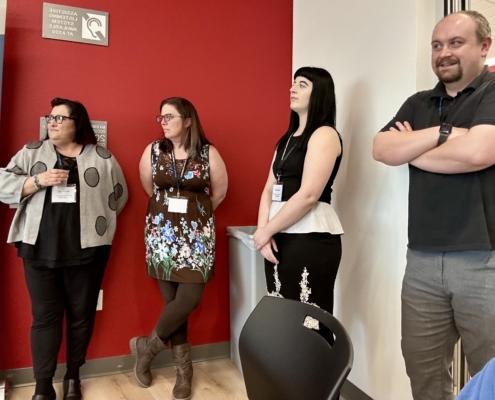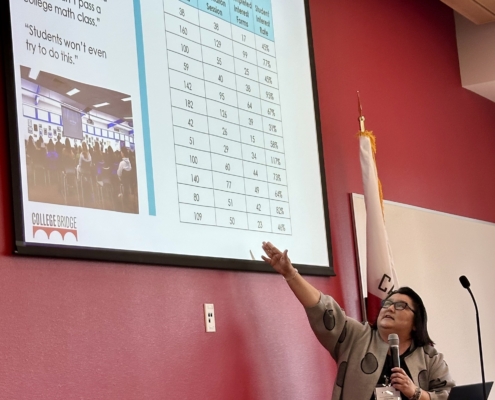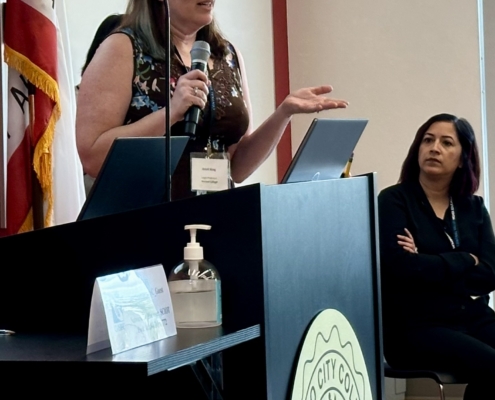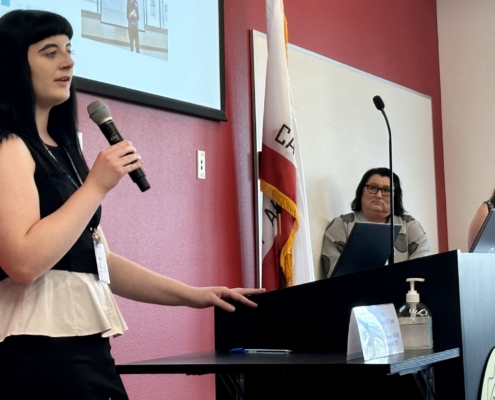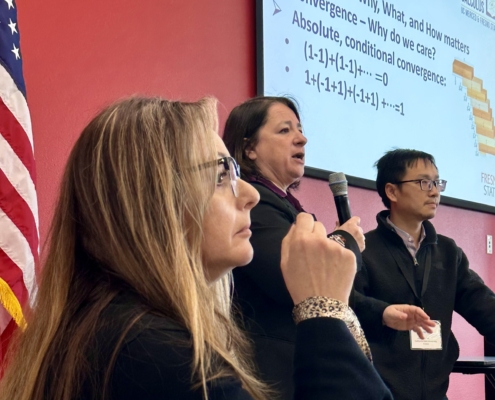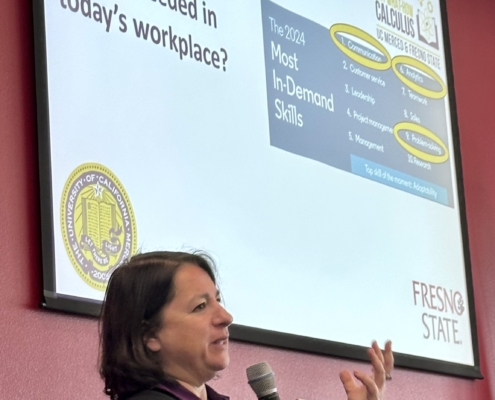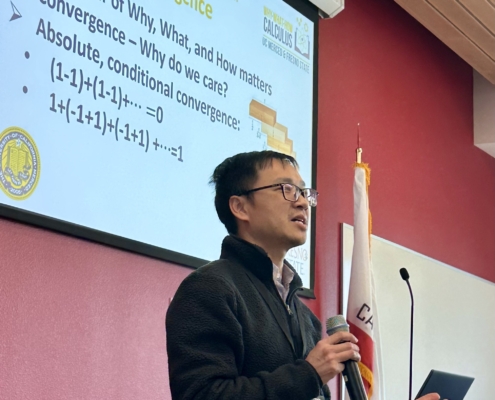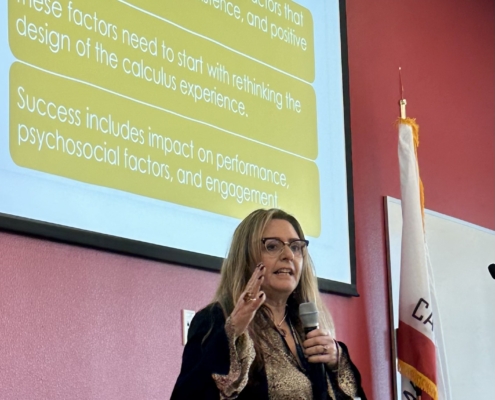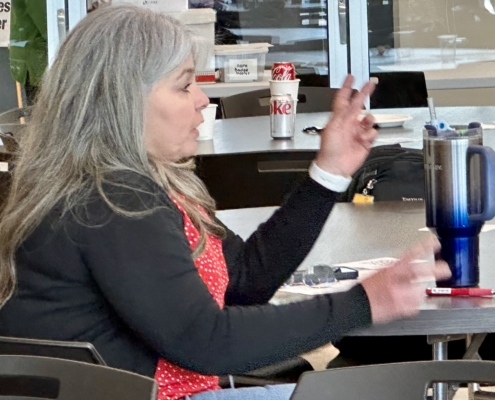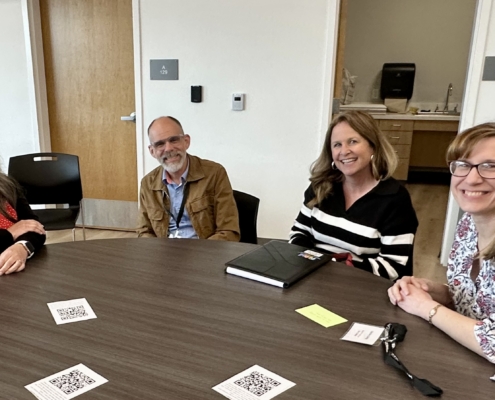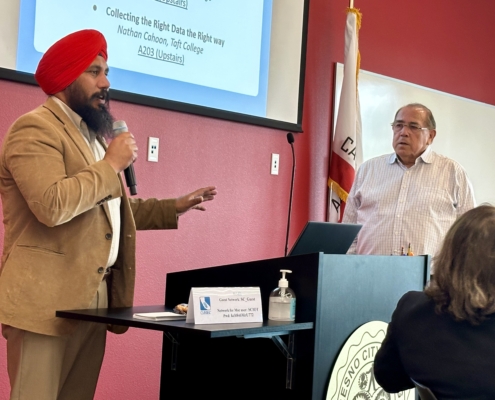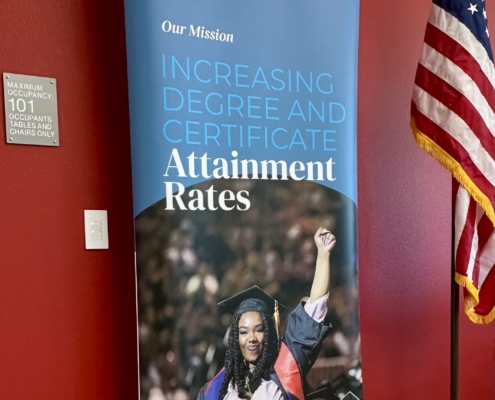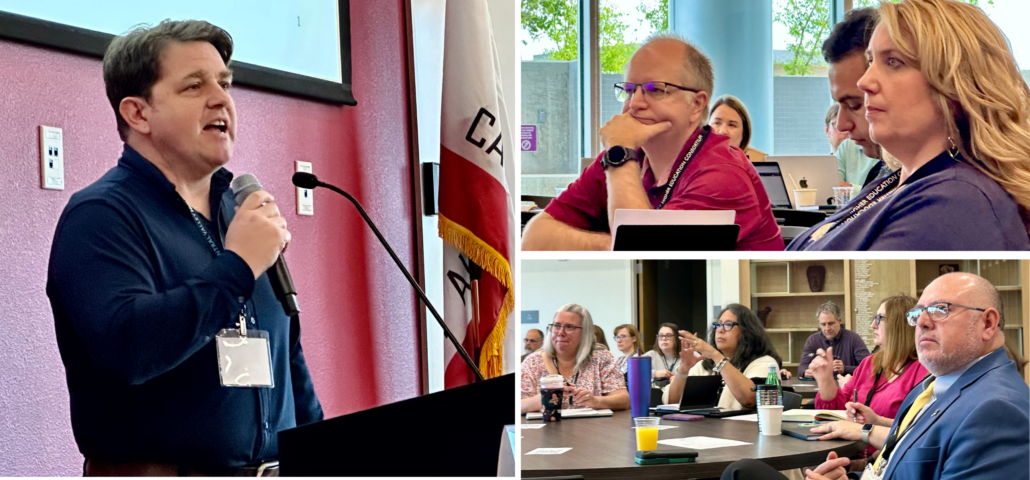 California Community Colleges Vice Chancellor Eric Cooper faced a lively exchange with community college math educators at the CVHEC Math Task Force’s AB1705 convening Mar. 28 in Fresno.
California Community Colleges Vice Chancellor Eric Cooper faced a lively exchange with community college math educators at the CVHEC Math Task Force’s AB1705 convening Mar. 28 in Fresno.
Math Task Force and CCCCO address tough questions head-on
as CVHEC member colleges report compliance with AB 1705
BY JOHN SPEVAK
Math and English Task Forces Lead – Central Valley Higher Education Consortium
The Central Valley Higher Education Consortium math community has accomplished much over the past two years as evidenced at the fifth AB1705 convening held Mar. 28 in Fresno by CVHEC’s Math Task Force.
About 65 community college math professors, California State University and University of California representatives and other higher ed professionals gathered to follow up on two years of deliberations regarding compliance with the state law including an incisive face-to-face interaction with Dr. Eric Cooper, vice chancellor of the California Community Colleges.
The day-long event was held on the new and picturesque West Fresno Center of Fresno City College which provided the setting for the lively exchange between participants and Dr. Cooper as well as a report from two members attending the American Mathematical Association of Two-Year Colleges Conference (AMATYC) last fall, Shelly Getty from Taft College and Jeremy Brandl from Fresno City College.
We learned that CVHEC’s 15 community college members have submitted curriculum plans to the Chancellor’s Office, heard a meaningful report about the Central Valley Math Bridge Program from the College Bridge team and we took a look at what lies ahead for the MTF with follow-up meetings planned for next fall and early next year.
Under the direction of the CVHEC Math Task Force, made up mostly of community college math professors from CVHEC member institutions originally with 21 members, the expanded group has grown to over 100 who have dealt with many challenges and opportunities successfully. While the task force has been in existence since 2019, it has moved into high gear the past two years addressing Assembly Bill 1705 and its calculus requirements for STEM majors with an average of about 60 math educators attending four in-person meetings.
What is most significant is the amount of dialogue, discussion and collaboration that has taken place among math professors and administrators in creating “The Central Valley Way” to math success in light of AB 1705.
The goal has always been, “What will work best for students?”
In the past two years, the focus has been on STEM students and the calculus courses they need to move forward in their education and careers. With the support of math professionals from the Charles A. Dana Center at The University of Texas at Austin, the task force has looked at examples of math education from states across the country as well as California.
The group has also benefited significantly from the participation of math educators from some of CVHEC’s university member campuses of Fresno State, Fresno Pacific University and the University of California, Merced.
There was a sense following the most recent meeting Mar. 28 in Fresno, with about 65 participants, that we in the Central Valley are in a good place in STEM math, especially since recent guidelines from the CCC Chancellor’s Office responded to Central Valley concerns about the options that should be available to STEM students.
All 15 community college members for CVHEC have revised their curriculum for calculus and pre- calculus courses in light of AB 1705 and will begin teaching the revised courses in the fall. Here are examples of some curriculum info shared with CVHEC for publication:
San Joaquin Delta College in Fall 2025-Spring 2026
Submitted by Jacquelynn Schwegel
| Course Name(S) | Course Number | |
| For students without any Intermediate Algebra or Equivalent | Precalculus I with Support
AND Precalculus II with Support |
Math 38AEX
And Math 38BEX |
| For students with Intermediate Algebra, but no Trig./Precalc. | Preparation for Calculus I
OR Calculus I with Support |
Math 15EX
OR Math 1 + Math 102 |
| For students with Precalculus | Calculus I | Math 1 |
| For students with Calculus I | Calculus II | Math 2 |
Important Note: Calculus I with Support (Math 1 + Math 102) is open to any STEM student, regardless of prior math preparation. But we are offering two differentiated levels of ‘precalculus’ as an option for students without the traditional preparation. Based on one recent, small survey, we estimate about 14% of our STEM majors have only completed through Algebra I in high school.
Reedley College and Fresno City College:
Submitted by Jim Gilmore (RC) and Jeremy Brandl (FCC)
Low band- College Algebra Math 3A + Trigonometry Math 4A
Middle band – PreCaclulus (New innovative 4-unit course, Math 4) – coreq available
Highest band – Calculus 1 – 2-unit coreq available
Note: Counseling will recommend based on the above, but any student can opt into Calculus 1. Calc Coreq is optional for middle and highest band, but required for low band.
Looking ahead, CVHEC plans to schedule several Zoom meetings in fall 2025 to enable math professors to share their in-progress experiences in implementing the new curriculum.
In the spring 2026, CVHEC plans to schedule another in-person meeting to hear more about the results of the new courses and the data that has been collected to-date related to their implementation.
Below are some of the general comments and suggestions provided CVHEC regarding the Mar. 28 convening:
- It was helpful to hear about the challenges from different segments of educational system
- A great networking opportunity
- Today’s Sessions were great. Wish we could have a little more time in the group discussions.
- Thank you for getting Erik Cooper here in Person!
- I always learn something new.
- Things learned today:
-Know more people in UC, CC, HS and their prospective on the new policy
-Chancellor’s office point of view
-Good suggestions/comments during discussion section
- I particularly enjoyed CSU Fresno & hearing UC Merced’s approach to teaching Calculus- Why, what, how
- The vision and pedagogy is very similar to what my team has worked on in K-12 the last 13 years.
- Thank you for putting this together & keeping the pace of the agenda.
- In this time of challenges as a math faculty, I appreciate hearing from & talking with colleges from across the valley dealing with the same issues.
- Having someone from the Chancellors office was really good. It displays at least a little accountability
- Loved hearing on how Central Valley Math Bridge is working with local high school gathering students ready and interested in college math
- Great day. I appreciate hearing the many different things that were shared of what is going on for different levels of mathematics
- Keep it positive. Letting this devolve to complaining about what students don’t know, how high schools teach, how the data is hardened ultimately doesn’t help us move forward.
- I loved the energy and honesty- People treated respectfully even when there were disagreements.
- It would be interesting to bring in more participants from K-12 and have a discussion of what are the expectations both ways.
- More on what people are doing.
- Introduce IR Experts to help faculty understand what data to ask for
- Would love 9-12 participation
- Have a central place to keep all information like PowerPoints, links on materials. Emails get lost.
- Have a math activity idea sharing time.
- More breakouts please or more time for the one breakout.
- Thing want to know in future: more on how instructions teach in their classroom (especially high school teachers)
- K-12 alignment with the colleges is needed. K-12 districts need to know what colleges need students to know so we can plan.
- I think working on the instructional approach to calculus and STATA will be critical, so the AB1705 doesn’t contribute to an increased attrition rate at community college.
- Share a summary of the day along with presentations. (email or post on website)
- Rotate the location up & down the valley
- Chancellor Rep was great
- Breakout was good but too short.
- Math threads report out was a bit too long
- More practical examples would help. I would like to go with something I can use immediately
- How are other student support programs like MESA, tutoring, etc. being integrated into the courses?
- How can high schools help support the shifts going on at the college level
- Find ways to help college advocate for the resources they need (tutors, smaller class sizes, good tech)
- The admin should be investing in making math successful
- Maybe a bit less on agenda would have taken the time pressure off.

